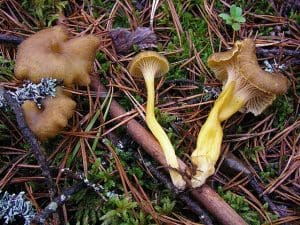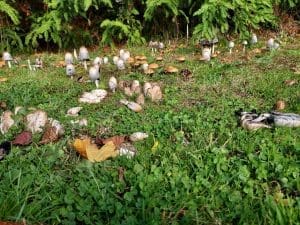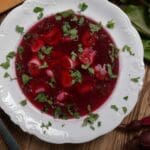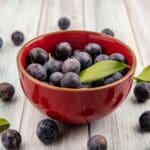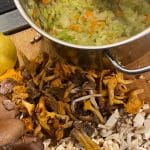October is one of my favourite months to forage in, there’s fungi everywhere and it’s still mild enough for fresh greens and herbs. The weather can be really variable in October, some days it’s sunny and warm and the next day it’s an amber weather warning. The days are getting shorter and plants are getting ready for the cold months ahead.
So what can you forage in October? Here are our top five picks for the month.
Beech nuts
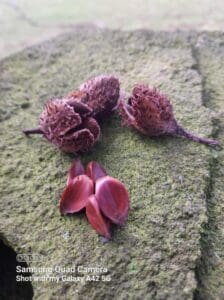
An underused nut in my opinion, they are plentiful and nutritious but can be a bit fiddly to collect and process. The nuts or ‘mast’ sometimes appear in huge quantities and can be used in a similar way as pine nuts.
Click here for the ID guide for Beech.
Rose hips
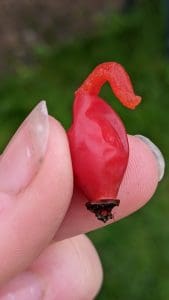
Rose hips are highly nutritious and tasty, they are particularly high in Vitamin C and played a really important role as a herbal medicine in the past. You can read more about their health benefits here. They can be eaten raw or cooked. You just need to be careful of the seeds that are covered in irritating hairs. I’d say Dog rose gives the tastiest hips but the hips of all roses are edible.
Click here for the ID guide for Dog rose
Sloes
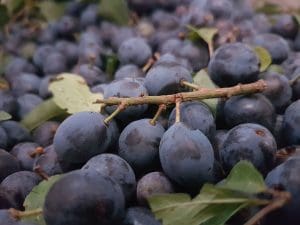
There can’t be many people left who haven’t tried Sloe gin, it gets more and more popular each year. Sloe can also be cooked and used in crumble and pies but to be honest they are quite tart so really gin is the best use for them. They are really easy to ID, about the only things they could be confused with would be other Prunus species but they are all edible. Sloes are distinguished by the spikes on the branches and the size of the fruit.
Click here for the ID guide for Sloe.
Bay bolete
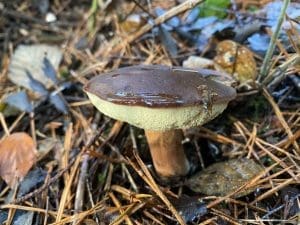
Not as highly regarded as Porcini but in my opinion just as tasty and more common. Depending on weather conditions they can appear in huge flushes. They can look similar to other boletes but if you stick to the red or blue rule they’re a really good family to explore.
Click here for the ID guide for Bay Bolete.
Shaggy Ink Cap
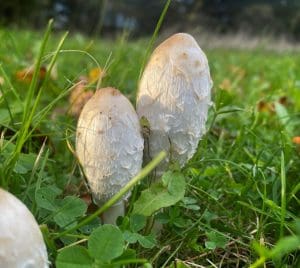
These mushrooms have quite a long season but I think that they’re most common in October.They are a general saprotrophic mushroom, feeding on dead organic material and can pop up virtually anywhere. They are pretty beginner friendly, their main lookalike is the magpie fungus.
Click here for the ID guide for Shaggy Inkcap.
Recipe of the month when Foraging in October
Rosehip fruit leather
Fruit leathers are a great way to preserve any wild fruit particularly rosehips. This recipe will make about 30 rolls which stored in an airtight jar will keep for up to 12 months. They’re a great treat to take on a long walk, I’ve even ‘melted’ them in boiling water to make a quick, vitamin rich drink.
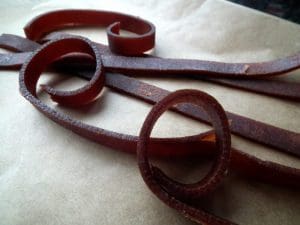
Ingredients:
300g cooking apples, peeled and cored (cut them as you like, diced, quartered)
300g Rosehips, chopped in half and seeds removed
500g jam sugar
Method:
Put the apples in a large pan and cook on a medium heat for 10 minutes, until it starts to mush down slightly, add the sugar and Rose Hips and cook for a further 5 minutes.
Put the whole lot in a blender and blitz until a smooth consistency is reached
Boil this mixture until it starts to caramelise (usually around 30 minutes on medium heat).
Once you’ve reached this stage, pour this mixture in to two large non-stick dishes that are lined with baking parchment (at least 30x20cms, it’s good to be spread thin so put in even more separate dishes if you have small ones – a thick spread in the tray will take forever to dry) and place in your oven on 100C. Leave the door of the oven slightly ajar and allow all of the liquid to evaporate from the mixture, I leave for 4 hours and then check how it feels – it should peel out of the tray easily and shouldn’t feel wet or overly sticky, if it is I leave it in another hour and try again (depending on how much liquid was in the initial ingredients this can take up to 10 hours).
You should now be able to peel your fruit leather off your tray and can eat it straight away, or roll it up in the baking paper and store in the fridge or an airtight jar. This is amazing preservation and should store for at least 1 yr in your jar.
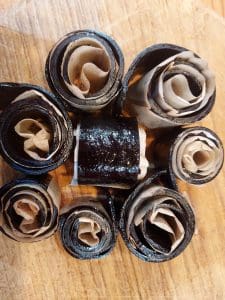
Click here for more Autumn recipes.
What to Forage in September.
Foraging in September is brilliant, September marks the end of summer and the beginning of autumn, it’s the month for berries, nuts and seeds. The wetter weather also marks the beginning of ‘mushroom season’ and you’ll see fungi springing up almost everywhere you look.
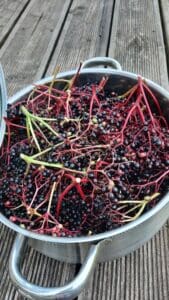
What to forage in November.
Traditionally November marked the end of the harvest season and the beginning of winter, but there’s still space to head out foraging in November. It’s really the foragers last chance to collect and preserve ingredients to last throughout the winter. In some parts of the country snow will already have fallen and it’s dark by 4pm but there’s still plenty of edibles to find.
